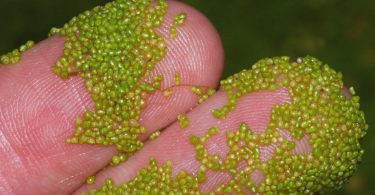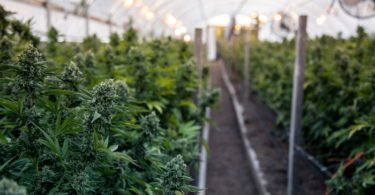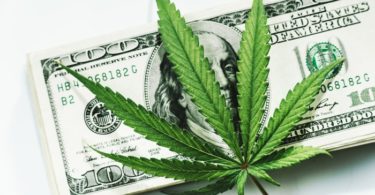The marijuana industry is blossoming before our eyes. After spending many decades as a taboo and illicit substance, cannabis is now perfectly legal for adult consumption in Canada (as of October 17, 2018). Though supply shortages and regulatory red tape have slowed weed’s launch out of the gate, estimates suggest that Canadian cannabis could net close to $6 billion in annual revenue by 2022.
The marijuana movement is also picking up significant momentum in the United States. At year’s end, 33 states had given the green light to medical marijuana, with another 10 allowing adult consumption. With 2 out of 3 Americans in favor of legalization, according to a Gallup survey this past October, it would be prudent to expect additional state-level expansions to follow in the United States.

IMAGE SOURCE: GETTY IMAGES.
Don’t overlook the suddenly high-growth hemp industry
However, it’s not just the legal marijuana industry that’s suddenly thriving. Following the passage of the Farm Bill in the U.S. this past December, which legalized hemp and hemp-based cannabidiol (CBD) products, hemp is all the rage.
Though my colleague Todd Campbell does a great job of explaining the differences between cannabis and hemp, the biggest difference you need to know is that hemp has industrial uses and won’t get you high. Hemp is often rich with CBD, the non-psychoactive cannabinoid that’s best known for its perceived medical benefits, and typically contains small traces of tetrahydrocannabinol (THC), the cannabinoid that gets a user high. Meanwhile, cannabis plants are usually rich in THC.
Hemp has been used for a long time in paper, plastic, pet and human food, clothing, insulation, and a host of other products. The passage of the Farm Bill, which was trumpeted by Senate Majority Leader Mitch McConnell, R-KY, a longtime voice of opposition to the marijuana movement, will allow licensed businesses to grow hemp legally, as well as extract CBD from hemp plants, thereby marketing CBD oils, lotions, and perhaps even hemp-derived edibles. Please note that cannabis-derived CBD is still illicit at the federal level and that certain states have chosen to crack down on CBD edibles of any form, even if they’re hemp-derived.
Just how much growth can we expect out of the U.S. and global hemp industry? According to a first-of-its-kind report from data analytics firm New Frontier Data, “The Global State of Hemp: 2019 Industry Outlook,” global hemp retail sales totaled $3.7 billion in 2018 and are on track to grow to $5.7 billion by 2020.

IMAGE SOURCE: GETTY IMAGES.
On a more individual level, China led all countries in 2018 with almost $1.2 billion in hemp sales, followed by the U.S. at $1 billion, all of Europe at $980 million, and the combination of Central and South America at $220 million. However, by 2022, New Frontier Data’s report estimates U.S. hemp sales will have jumped to $2.6 billion, representing a compound annual growth rate of 27%. Of this $2.6 billion in hemp sales, half ($1.3 billion) will be generated from hemp-derived CBD products.
These “ex-hemp-lary” stocks aim to cash in
The big question then turns to which companies aim to benefit from the rising tide of hemp. The most logical choice is… a Canadian company.
Although Canopy Growth (NYSE:CGC) is focused on its 5.6 million square feet of cannabis cultivation space in Canada, the company was also recently awarded a hemp growing and processing license in New York State. Canopy Growth intends to invest between $100 million and $150 million to develop a facility in the southern portion of the state with the intention of processing hemp for its high-margin CBD.
Making Canopy Growth an even more compelling hemp play is the fact that it acquired Colorado-based hemp research company ebbu late last year for about $330 million in a cash-and-stock deal that was heavily reliant on stock. For its haul, Canopy Growth gets access to ebbu’s portfolio of intellectual property for the hemp industry that could net it a handsome long-term return.

IMAGE SOURCE: GETTY IMAGES.
The passage of the Farm Bill and expected surge in sales for hemp-derived CBD should also be great news for Charlotte’s Web Holdings (NASDAQOTH:CWBHF), which makes its living selling hemp-derived oil products. Though Charlotte’s Web isn’t allowed to imply that its products provide medical benefits, there’s been enough interest in CBD products by the public that this hasn’t seemed to matter much. Even prior to the passage of the Farm Bill, Charlotte’s Web had its CBD products in more than 3,600 retail locations, and it’s one of the very few pot stocks to have posted an operating profit without the aid of one-time benefits or fair-value adjustments.
Another company that could also do quite well but isn’t even involved in the U.S. hemp industry yet is Aurora Cannabis (NYSE:ACB), Canopy Growth’s biggest competitor. In a mid-January interview with Business Insider, Aurora’s CEO Cam Battley announced that his company would soon unveil a strategy to target hemp-derived CBD in the U.S. market. Following a 345 million Canadian dollar ($261.1 million) convertible note capital raise, Aurora Cannabis is now sitting on roughly CA$500 million ($378.5 million) in available capital, which would make entry into the U.S. feasible. As Canada’s projected largest marijuana producer at peak output, Aurora should have no trouble making a name for itself in the U.S. hemp market.
Understandably, hemp’s aggregate dollar value is still relatively small next to legal cannabis, but $2.6 billion in annual sales is nothing to overlook.
More at: Fool.com






